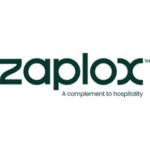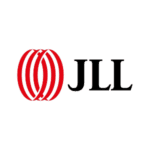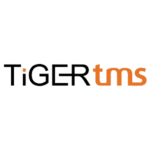 With its tenth annual Vacation Confidence Index*, Allianz Global Assistance finds 10 percent of Americans admit to going over budget while on vacation last year, and those who did, on average, overspent by 27 percent ($534).
With its tenth annual Vacation Confidence Index*, Allianz Global Assistance finds 10 percent of Americans admit to going over budget while on vacation last year, and those who did, on average, overspent by 27 percent ($534).
Breaking down by age group, 92 percent of Millennials (ages 18-34) and 91 percent of Baby Boomers (ages 55+) did not overspend, while 87 percent of Gen X’ers (ages 35-54) were able to stay within budget. Gen X’ers also tend to overspend more, averaging 32 percent over budget, which amounts to $836 based on their anticipated spend, while Millennials overspent by 26 percent ($362) and Baby Boomers overspent by 20 percent ($369).
The 2018 survey reveals that the average anticipated spend on vacations this summer, $1,936, has decreased slightly from last year when it was $1,978. Still, the projected total spend will crack the $100 billion mark for the second time in the survey’s history, amounting to $100,400,000,000.
|
Vacation Confidence Index 2018 |
||||
|
Year |
Projected Total |
% Change |
Average Spend |
% Change |
|
2010 |
$76 Billion |
N/A |
$1,653 |
N/A |
|
2011 |
$89.7 Billion |
18 |
$1,704 |
3.1 |
|
2012 |
$79.8 Billion |
-11 |
$1,565 |
-8.1 |
|
2013 |
$81.1 Billion |
1.6 |
$1,755 |
12.1 |
|
2014 |
$98.8 Billion |
21.8 |
$1,895 |
7.9 |
|
2015 |
$85.5 Billion |
-13.5 |
$1,621 |
-14.4 |
|
2016 |
$89.9 Billion |
5.1 |
$1,798 |
10.9 |
|
2017 |
$101.1 Billion |
12.5 |
$1,978 |
10.0 |
|
2018 |
$100.4 Billion |
-0.7 |
$1,936 |
-2.1 |
Allianz has analyzed American travelers’ summer vacation spending habits, revealing that Americans are forecasted to spend over 20 percent (23.5 percent) more than they did in 2010, when the average anticipated spend was $1,653.
The survey also shows that 46 percent of Americans typically take an annual summer vacation, a three percent decrease from 2017, while 53 percent do not. However, 18 percent of Americans have taken a vacation in the past three months, up four percent in 2017, which may explain both the decrease in those taking a summer vacation and the decrease in spending.
Despite a slight decrease in spending in 2018, Americans are still projected to spend significantly more on summer vacation than 2016, when the total spend was $89,900,000,000. The total spend continues to rise overall, mirroring the Dow Jones Industrial Average (DJIA) growth since recovering from the recession of 2008 – 2009. Since the beginning of 2012 to the start of this year, the DIJA has doubled, increasing from 12,360 to 25,0751. The DJIA sat at nearly 20,000 at the start of 2017, when the projected spend hit $101,100,000,000. Stock market ups and downs in the first few months of 2018 may have impacted this year’s lower total spend, decreasing less than a percent (0.7 percent)2.
A video highlighting the survey findings can be viewed here.
“Traveling is an investment, and one that has been increasing over the last ten years, as our Vacation Confidence Index shows,” said Daniel Durazo, director of communications at Allianz Global Assistance USA. “While other variables – the stock market, airline ticket price, gas, hotel rates – change, it’s safe to say that people continue to find value in and spend money on travel. Travelers may be able to protect many travel investments with the right travel insurance policy.”
The Vacation Confidence Index has been conducted each summer since 2009 by national polling firm Ipsos Public Affairs on behalf of Allianz Global Assistance USA. A vacation is defined as a leisure trip of at least a week to a place that is 100 miles or more from home.
*Methodology: These are findings of an Ipsos poll conducted on behalf of Allianz Global Assistance. For this survey, two methodologies were employed. First, a sample of 1,005 Americans from the Ipsos I-Say panel and non-panel sources was interviewed from May 2 –5, 2018.The precision of online polls is measured using a credibility interval. In this case, the weighted results are accurate to within +/-3.5 percentage points, 19 times out of 20, of what the results would have been had all American adults been polled. Second, a live-operator telephone survey was conducted via the ORC Caravan from May 31 to June 3, 2018, using random-digit dialing, including cellphone sampling. The margin of error is +/- 3.1 percentage points, 19 times out of 20.
1 http://www.fedprimerate.com/dow-jones-industrial-average-history-djia.htm
2 https://www.statista.com/statistics/261690/monthly-performance-of-djia-index/













